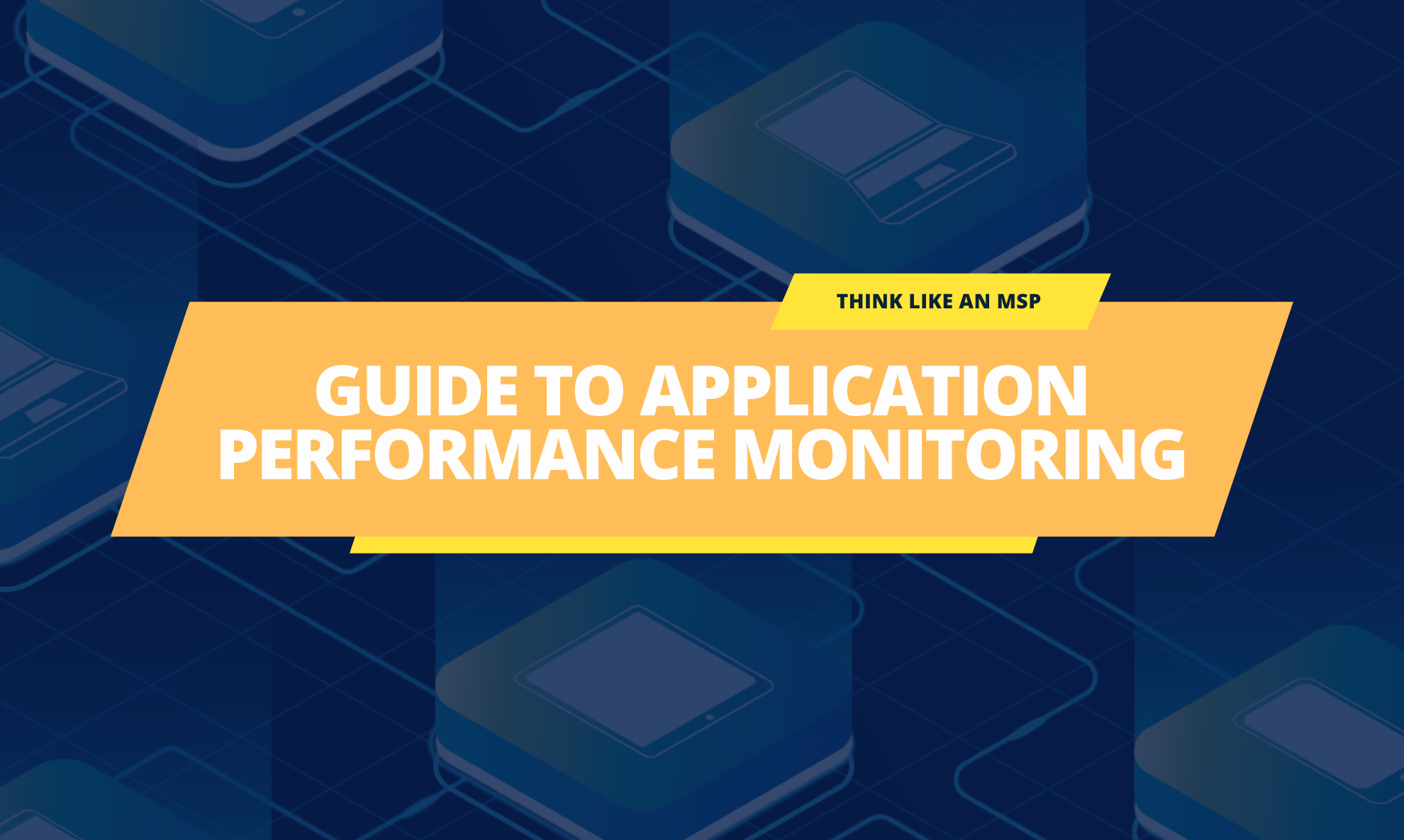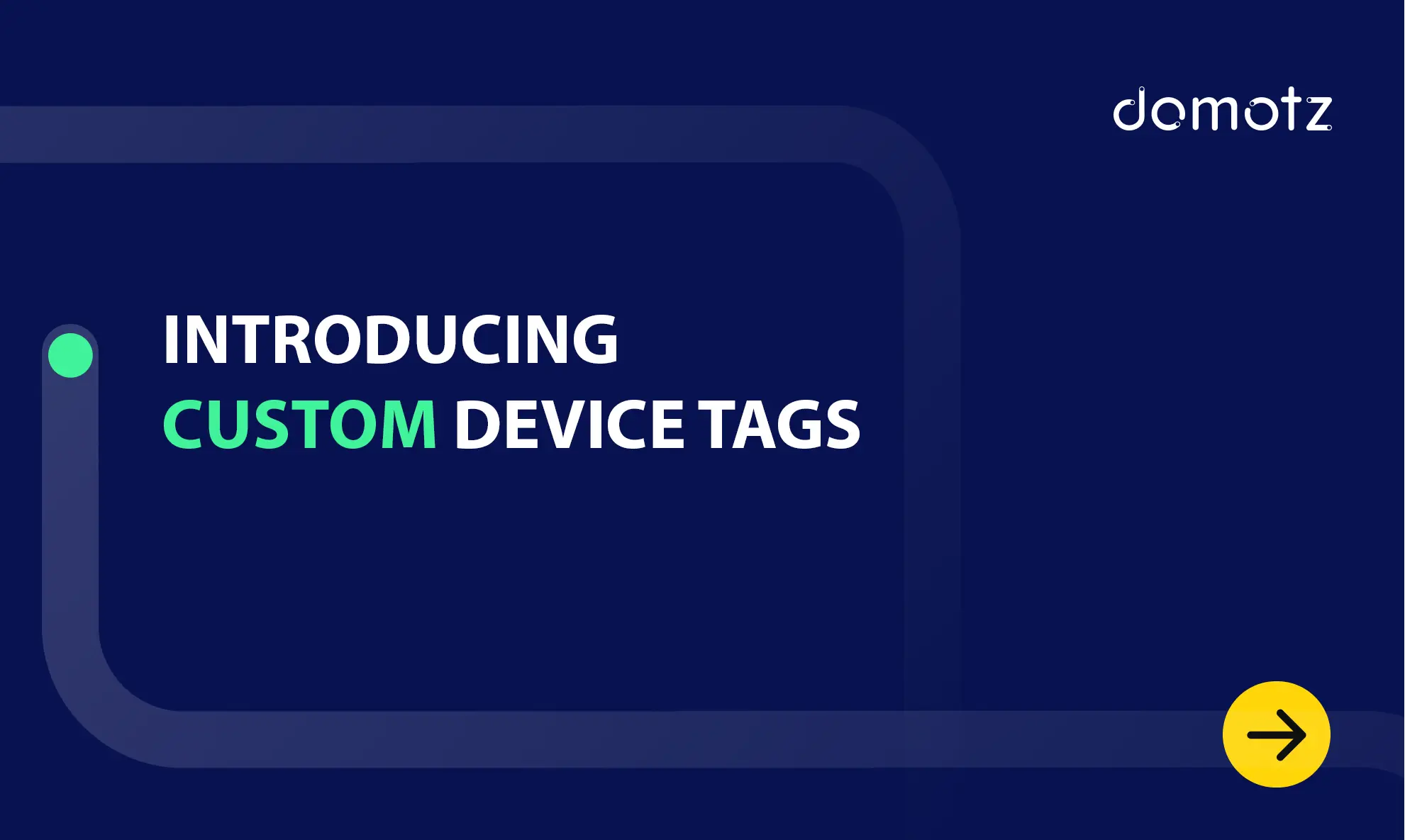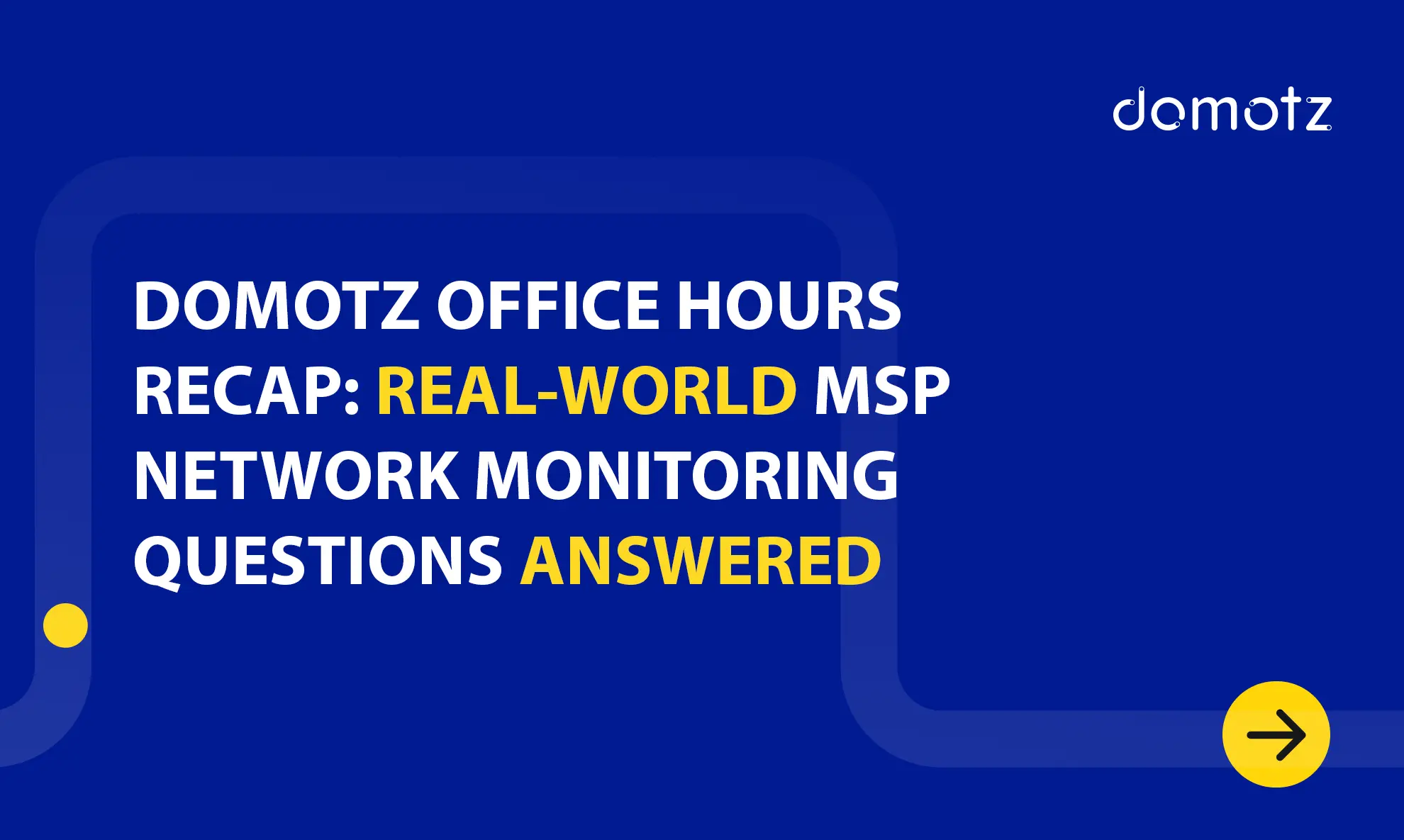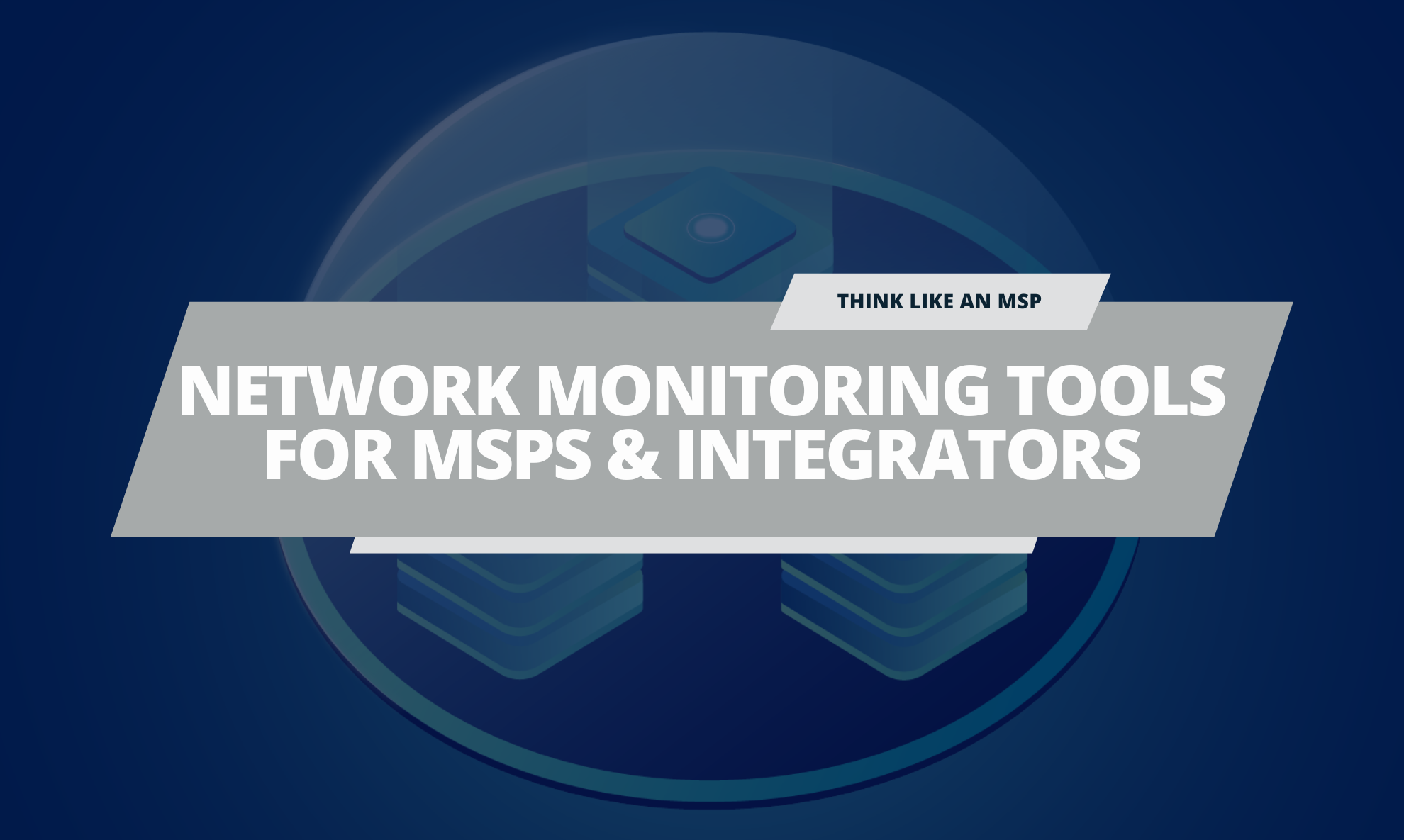In today’s world, there are many different applications that you need to deliver your services. Regarding applications, performance is paramount to delivering the best possible user experience.
This article discusses application performance monitoring and why it’s essential to your network management process.
Application performance monitoring enables you to get deeper insights into how your apps are behaving. What’s more, it allows you to monitor them in real-time, diagnose issues, and optimize performance. We’ll cover the following topics in relation to application performance monitoring in this article:
- What is application performance monitoring?
- Key components of APM
- Benefits of Application Performance Monitoring
- Application Performance Monitoring with Domotz
- Conclusion on APM
What is Application Performance Monitoring?
In short, Application Performance Monitoring (APM) is comprehensive monitoring and managing of the performance and availability of your software applications. To tell you more, APM involves monitoring various aspects of an application, such as response times, resource utilization, error rates, and transaction tracing, to gain insights into the application’s behavior and identify bottlenecks or inefficiencies.
Key Components of Application Performance Monitoring
Application Performance Monitoring encompassess many different components of monitoring. These can include:
- Application Monitoring: Collecting and analyzing an application’s performance data, including response times, throughput, error rates, and resource consumption. Application monitoring provides real-time visibility into the health and performance metrics of an application.
- Infrastructure Monitoring: Your network infrastructure includes your servers, databases, network components, and other infrastructure elements supporting the applications. Monitoring infrastructure helps you identify potential performance issues originating from the underlying infrastructure.
- User Experience Monitoring: Another component of application performance monitoring is user experience monitoring. This component aims to monitor and tracs user interactions with your applications. Aditionally, it can also include measuring response times and capturing user behavior data. User experience monitoring provides you with insights into how users perceive your application’s performance and helps identify areas for improvement.
- Log Monitoring: Lastly, Log monitoring involves analyzing application logs to detect errors, exceptions, and other relevant information. It helps troubleshoot issues, identify patterns, and better understand the application’s behavior.
- Tracing and Diagnostics: Tracing and diagnostics in APM enables you to track individual transactions or requests as they flow through the application’s components. Tracing and diagnostics can help you find out where performance bottlenecks are ocrruring as well as isolating specific issues within the application stack.
To sum things up, application performance monitoring includes various types of monitoring including application, infrastructure, user experience, log monitoring and tracing and diagnostics.
Next, let’s deep dive into the benefits of APM.
Benefits of Application Performance Monitoring
There are many benefits to application performance monitoring, which we’re going to discuss in further details.
- Proactively Detect Issues: APM lets you identify performance issues in real time. In addition, it helps reduce downtime and ensures a smoother experience for users.
- Troubleshoot faster: APM gives you insights into app behavior which makes it easier to troubleshoot and detect the route cause of an issue. You can use APM to pinpoint the source of performance problems and take corrective actions.
- Scale better and and Capacity Planning: Monitoring resource utilization helps you optimize network infrastructure and plan for future growth. Monitoring resources can also help you identify bottlenecks and ensures the application can handle increasing user loads.
- Better user experience: Looking at user experience metrics in great detail allows you to identify areas of improvement and optimize performance to deliver a seamless user experience.
- Optimize Costs: You can use APM to identify resources which are not being used efficiently as well as performance bottlenecks. To clarify, what this monitoring does is enable you to better allocate resources and reduce unnecessary infrastructure costs.
To sum things up, APM enables you to proactively detect issues, troubleshoot faster and scale better. What’s more, it also allows you to plan for capacity, hone in on the user experience and optimize your costs.
Application Performance Monitoring using Domotz
Our network monitoring software includes many integrations for monitoring application performance. The following is a list of the application monitoring integrations currently available on Domotz network management software.
Amazon Web Services
Monitor general information such as CPU, disk operations, and network properties, but also CloudWatch metrics for various AWS services; monitor and analyze the performance of EBS.
Learn more about Amazon Web Service Monitoring with Domotz.
Apache
Proactively monitor the configuration and performance of your Apache HTTP Server by extracting information related to the processes, child servers, clients, mod_status, and more.
Learn more about Apache Monitoring with Domotz.
Docker
With Domotz Dockef Monitoring you can monitor containers for performance and for the availability of services offered through your container systems.
Additionally, our Docker container monitoring enables you to monitor the statistics out of your Docker system such as statuses, counters, HW resource usage, images and more.
Learn more about Docker Container Monitoring with Domotz.
FreeBSD
Another powerful application performance monitoring integration available on Domotz. Proactively monitor your FreeBSD instances including the gateway status as well as ingress/egress statistics. Review the rule configuration, daemon status, and interface status. Monitor the performance of processes and other capabilities offered by pfSense (and a generic FreeBSD script).
Learn more about FreeBSD Monitoring with Domotz.
iPerf Internet Speed Test
You can use our application performance monitoring integration for iPerf Internet Speed tests to measure and monitor your speeds. This script can perform speed tests from Linux machines, with the ability to measure download and upload speed.
Learn more about iPerf Internet Speed Test Monitoring with Domotz.
Kubernetes
You can monitor your Kubernetes through Domotz with this application performance monitoring integration. Proactively watch over your Kubernetes Cluster status, Nodes/Pods, and other API metrics.
Learn more about Kubernetes monitoring with Domotz.
Linux Services
You can use our Linux services monitoring integration to monitor Linux operating systems (OS) for computers, servers, mainframes, mobile devices, and embedded devices. Easily retrieve information about the services you want to monitor.
Learn more about Linux Services Monitoring with Domotz.
macOS
If you need to monitor macOS applications then you’re in the right place. Get detailed information about your macOS devices like OS name, OS version, vendor, architecture, and serial number.
Learn more about macOS monitoring with Domotz.
MySQL
Use our MySQL application performance monitoring integration to proactively monitor your MySQL server hosted from a Linux machine. You can monitor your MySQL status and related metrics.
Learn more about MySQL monitoring with Domotz.
Nginx
We also have an application performance monitoring integration for Nginx. Proactively monitor Nginx for the status and statistics of your Server by extracting information related to the ActiveState processes, connections, tasks, and more.
Learn more about Nginx monitoring with Domotz.
pfSense
We also have application performance monitoring scripts and integrations available for pfSense. Proactively monitor the gateway status as well as ingress/egress statistics of your pfsense. Review the rule configuration, daemon status, and interface status. Monitor the performance of processes and other capabilities offered by pfSense (and a generic FreeBSD script).
Learn more about pfSense monitoring with Domotz.
RabbitMQ
You can proactively monitor RabbitMQ performance and instances (single nodes or clusters) through Domotz.
Learn more about RabbitMQ monitoring with Domotz.
Raspbian
We also have an application performance monitoring integration for Raspbian. Monitor additional information about your Raspbian devices like OS name, OS version, vendor, architecture, serial number, and build number.
Learn more about Raspbian monitoring with Domotz.
Redis
We have application performance monitoring available on Domotz for Redis. Extract and monitor information like configuration, resource consumption (memory, CPU, etc.), cluster definition, replication statistics, connected client information, and more.
Learn more about Redis monitoring with Domotz.
Sophos
We have ready-to-use SNMP sensor templates for Sophos firewalls. You can use them to optimize the management of multiple networks and analyze changes in the metrics you’re tracking.
Learn more about Sophos monitoring with Domotz.
SSL/TLS Certificates
Proactively monitor your websites and SSL/TLS Certificates with Domotz application performance monitoring integration. Monitor the SSL/TLS Certificates for all of your websites within one single table or the SSL/TLS Certificate for each website in a different device.
Learn more about SSL/TLS certificate monitoring with Domotz.
VMWare ESXi
Use our VMware ESXi integration to quickly access detailed information about your VMware ESXi virtual computers. For example, monitor OS name, OS version, vendor, architecture, serial numbe and more.
Learn more about VMware ESXi monitoring with Domotz.
Website Content
We also have website content monitoring integrations available on Domotz. Our website performance monitoring allows you to monitor generic HTTP based content of your pages in PHP, HTML, JSON, and other formats.
Learn more about website content monitoring with Domotz.
Web Services Performance
You can also monitor the performance of your web services on Domotz.Monitor metrics including URL, Response Status, and Response Time.
Learn more about web service performance monitoring with Domotz.
Windows Servers and Endpoints
We offer a number of integrations for monitoring Windows endpoints and servers. Our application performance monitoring integrations for Windows include:
- Windows Services
- Windows Active Directory (AD)
- Windows Audit Settings
- Windows CPU Usage
- Windows Current Sessions
- Windows Endpoints Reachable Hosts
- Windows Update Agent
- Windows GPOs
Conclusion on APM
Application Performance Monitoring has become indispensable for businesses seeking to deliver high-performing applications. By monitoring and analyzing critical metrics, APM empowers organizations to proactively detect issues, improve troubleshooting efficiency, enhance user experience, optimize resource utilization, and drive business growth. Embracing APM enables businesses to stay ahead of the competition and ensure that their applications provide a seamless experience to users in today’s demanding digital landscape.
Application performance monitoring includes four various types of monitoring including application, infrastructure, user experience, log monitoring and tracing and diagnostics. In addition, APM enables you to proactively detect issues, troubleshoot faster and scale better. In addition, it also allows you to plan for capacity, hone in on the user experience and optimize your costs.
Stay tuned because we’re also continuously expanding our list for application performance monitoring.
Further reading:



